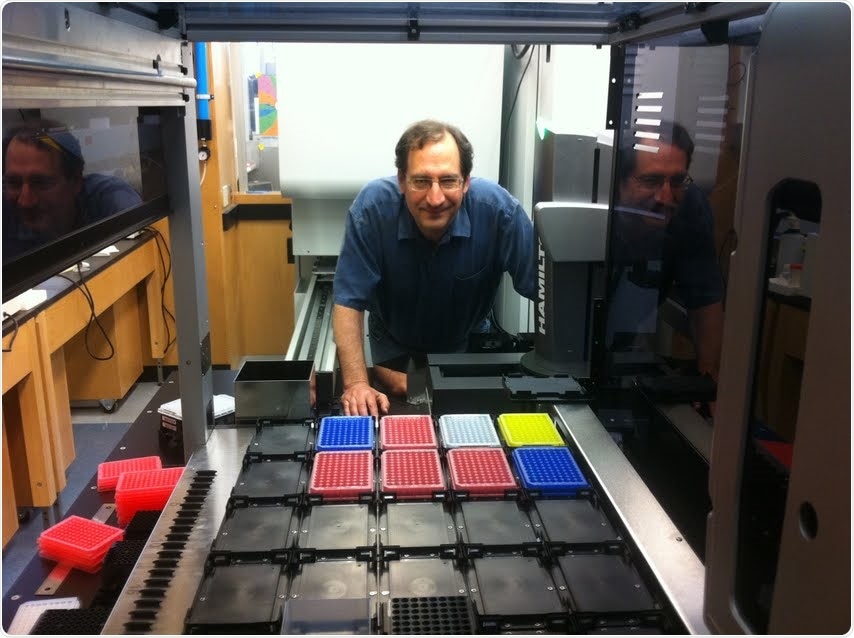Receptors are docking stations found on the surface of cells. Compounds such as caffeine and dopamine, as well as heroin, THC, and LSD, all bind to these receptors. G protein-coupled receptors are actually the intended targets of over 30% of currently available pharmaceuticals.

Bryan L. Roth, MD, PhD. Image Credit: UNC School of Medicine
However, these treatments frequently strike unintended areas, such as the nervous system, resulting in the long list of side effects seen at the end of pharmaceutical advertising.
According to Bryan L. Roth, the Michael Hooker Distinguished Professor of Pharmacology at UNC School of Medicine, “What we need are more precise and less harmful treatments that are just as effective.”
However, developing improved medications is a difficult task. To achieve the exact chemical reaction within cells, drug developers need to know the actual chemical structure of a medication and the desired receptor. The problem is that the medicine must not impact other receptors or attach to target receptors in such a way that it causes negative impacts within cells.
“In the past, scientists would test molecules in a one-by-one fashion against a therapeutic target in a lengthy and expensive operation,” added Professor Roth who is also the head of the Psychoactive Drug Screening Program of the National Institute of Mental Health. As a result, researchers developed virtual libraries of molecules as well as sophisticated computer programs that could examine hundreds of thousands of molecules at once.
“Test” means that the computer software combed through a library of chemicals that could theoretically be manufactured and could theoretically bind to a specific cell receptor with the correct affinity. To optimize a molecule’s structure, researchers could tweak chemical bonds in a computer program. They may then construct a smaller piece of these molecules and test them in cell cultures.
Virtual libraries were a huge step forward in the sector. It sounds like a lot of work to test hundreds of thousands of potential compounds, some of which might be candidates with properties worth examining. However, there are billions and billions of chemical combinations that might theoretically result in the formation of an almost endless number of compounds or medications.
Consequently, researchers have created large libraries of theoretical compounds, containing billions of mostly “undiscovered” and untested molecules that may or may not bind to a specific cellular target, and may or may not have therapeutic value.
Unfortunately, chemical space is vast. It has been estimated that there exists, theoretically, more chemicals than there are actual molecules in the universe. And only a small sliver of the potential chemicals can be physically tested.”
Bryan L. Roth, Michael Hooker Distinguished Professor of Pharmacology, UNC School of Medicine
Roth collaborated with researchers from the University of Southern California and Northeastern University to evaluate V-SYNTHES, a new form of computational method devised by Vsevolod Katritch, PhD, from USC.
This method enables researchers to first determine the ideal combinations of chemical building blocks called synthons—hypothetical units inside molecules—to act as seeds that can develop into a hierarchy of molecules with the best-predicted ability to attach to the receptor targets.
This approach allows researchers to computationally test billions of compounds against a therapeutic target. To our knowledge this is the largest successful computational screen to date.”
Bryan L. Roth, Michael Hooker Distinguished Professor of Pharmacology, UNC School of Medicine
The team tested 11 billion theoretical compounds against a cannabinoid receptor (CB2) targeted by THC, marijuana’s active ingredient.
V-SYNTHES represents a major advance in the field of drug discovery. It is easily scalable and adaptable, and it should open new vistas in the discovery of potentially therapeutic chemicals for a large number of disorders at a rate never before possible.”
Bryan L. Roth, Michael Hooker Distinguished Professor of Pharmacology, UNC School of Medicine
Source:
Journal reference:
Sadybekov, A. A., et al. (2021) Synthon-based ligand discovery in virtual libraries of over 11 billion compounds. Nature. doi.org/10.1038/s41586-021-04220-9.